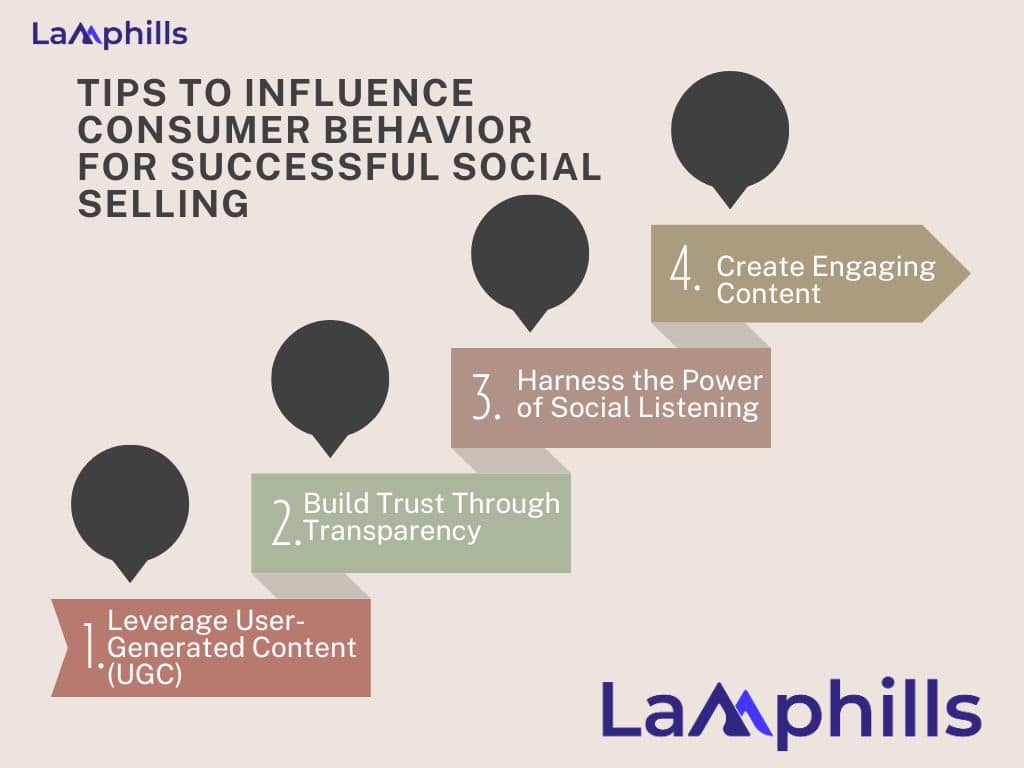Have you ever wondered why we make certain decisions on social media? I sure have, especially when I find myself buying something just because it popped up in my feed or following a trend I didn’t even know I cared about! It made me curious about what’s really going on behind the scenes with our behavior online. That’s when I started diving into social media consumer behavior and the theory behind it.
Turns out, there’s a lot more happening than just casual scrolling! The way we engage, the things we like, and even the ads we see are all connected to deeper patterns of human behavior. Let me break down what I’ve learned so far about how these behaviors are studied and understood.
Key Points
- Social media platforms shape consumer choices by promoting products, trends, and brand interactions, impacting what people buy and who they trust online.
- This concept examines how individuals and groups use social media to discover, evaluate, and promote products or services, evolving with new platforms and technologies.
- Consumer behavior theory reveals that negative social interactions can hurt long-term brand loyalty, while factors like past experiences shape how consumers respond during brand crises.
- Influencers and social proof play a crucial role in consumer behavior, as people trust recommendations from influencers and tend to follow popular opinions based on likes and shares.
- Successful social selling relies on trust-building, user-generated content, social listening, and engaging content, all of which strengthen the relationship between brands and consumers.
Social Media Consumer Behavior

Credit: rawpixel
Social media consumer behavior examines how people and groups interact with social media to find, assess, buy, and promote different products, services, or brands. It’s about figuring out why consumers make certain choices online based on the content they see, the conversations they join, and the influences they follow on these platforms.
One important thing to keep in mind is that the constant launch of new social media platforms, features, and technologies keeps changing how people connect with brands and make their purchasing decisions. The way we interact with companies today is different from a few years ago, and it’s all thanks to these evolving digital tools.
Social Media Consumer Behavior Theory
Consumer behavior theory plays a big role in how brands operate on social media. First, research has shown that how people interact with brands online is crucial. When consumers engage in negative or uncivil conversations on social media, it can reduce their long-term engagement with the brand. This means those hostile interactions can harm a brand’s ability to maintain loyal customers.
Second, several factors can influence consumer behavior on social media. Past interactions with a brand, for instance, can shape how someone feels about it, especially during challenging times like brand crises. These moments affect how consumers speak about the brand and their emotional reactions to it.
Third, social media gives brands an incredible opportunity to study consumer behavior. They can monitor how people perceive them and how they react to both marketing efforts and crises. This real-time feedback helps brands better understand their audience.
Lastly, consumers’ actions on social media can be grouped into different motivators. Some people engage quietly by liking posts or watching videos (brand tacit engagement), while others proudly showcase their love for a brand (brand exhibiting). Then there are those who consistently support a brand (brand patronizing) or hunt for deals (brand deal seeking). Recognizing these behaviors allows brands to identify key consumer segments and fine-tune their strategies to meet different needs.
How does Social Media Influence Consumer Behavior?

Credit: Freepik
When I started paying more attention to how social media shapes our choices, it opened my eyes to how much influence these platforms really have on what we buy, who we trust, and even what brands we stick with. Let’s take a closer look at some key ways social media impacts consumer behavior:
#1. Product Discovery
Social media has become this huge online marketplace where we come across new products or services through posts, reviews, and recommendations from friends or influencers. It’s so easy to discover something new because everything is right there, a click away.
#2. Engagement strategies
This is where brands can shine—by creating content that doesn’t just promote their products but also invites people to share their experiences. When your customers love what you offer, they naturally become advocates for your brand, talking about it and spreading the word to their own networks. This kind of organic support builds credibility and widens your reach.
#3. Influencers
Influencers play a huge role in shaping what people buy. When an influencer recommends a product, their audience is more likely to trust it because of that personal connection. It feels more authentic than traditional ads, which is why it works so well.
#4. Engagement strategies
Partnering with influencers who align with your brand can be a powerful move. Offering them products in exchange for honest reviews or collaborations can open the door to their engaged followers. This way, your brand gets exposure in a trusted environment, boosting both visibility and credibility.
#5. Social Proof
Ever noticed how a product’s popularity can be judged by the number of likes, shares, or comments it gets? This is social proof in action. When people see others praising or recommending a product, they’re more likely to follow suit and make a purchase.
#6. Engagement strategies
Encourage your customers to leave reviews and share their experiences. Positive feedback on social media can have a ripple effect, influencing others to check out your brand. And by responding to these reviews, you build even more trust with your audience, showing that you genuinely care about their opinions.
#7. Feedback and Reviews
Social media is where people go to voice their opinions, good or bad, about products and services. These honest reviews can be a game-changer for potential customers who are trying to decide whether to buy.
#8. Engagement strategies
Actively responding to both positive and negative comments on your social media pages shows that you value customer feedback and are committed to improvement. This transparency not only solves immediate problems but also strengthens your brand’s reputation over time, turning casual browsers into loyal customers.
#9. Fear of Missing Out (FOMO)
We’ve all felt that little pang of FOMO when scrolling through social media—whether it’s seeing friends with the latest gadgets or discovering an amazing limited-time deal. That feeling can drive people to make impulsive purchases just to avoid being left out.
#10. Engagement strategies
Tap into FOMO by creating content that highlights urgency—think flash sales, exclusive deals, or limited-time offers. By making your audience feel like they need to act fast, you can motivate them to take action immediately, boosting both sales and engagement.
Each of these strategies not only leverages how consumers behave on social media but also builds stronger connections with your audience, helping your brand stand out in today’s crowded digital landscape.
Tips to Influence Consumer Behavior for Successful Social Selling

When it comes to social selling, it’s all about blending authentic social engagement with your business strategies. Here are some effective tips that will help you shape consumer behavior and drive social selling success:
#1. Leverage User-Generated Content (UGC)
One of the most genuine ways to connect with potential buyers is by encouraging your current customers to share their experiences online. UGC is like a personal endorsement that can really resonate with your audience.
Here’s how you can make the most of UGC:
- Create branded hashtags: Come up with hashtags unique to your brand or specific campaigns, and invite your customers to use them when they post about your products. Not only does this make it easier to find and organize UGC, but it also increases your brand’s visibility across platforms.
- Repost customer content: Sharing UGC on your own social media shows appreciation for your customers and builds a sense of community. Plus, it lets your audience see how much others love your brand!
Example: If a customer shares an Instagram photo wearing your brand’s clothing along with your hashtag, repost it to your account. This not only highlights their positive experience but also boosts your brand’s credibility.
#2. Build Trust Through Transparency
Trust is everything in social selling. Being open and honest with your audience creates a foundation for loyalty, which keeps customers coming back.
Here’s how you can foster trust:
- Share behind-the-scenes content: Show your followers what goes on behind the scenes. Whether it’s your workspace, how products are made, or employee stories, this content humanizes your brand.
- Highlight your values: Talk about what your brand stands for and how you’re making a difference. Customers are more likely to connect with a brand that aligns with their own values.
- Address customer inquiries openly: When someone has a question or complaint, respond promptly and honestly. It shows you care about customer satisfaction.
Example: If you run a cosmetics company, posting YouTube videos showing how your products are made, especially if you use natural ingredients, helps build trust with eco-conscious consumers.
#3. Harness the Power of Social Listening
Using social listening tools gives you the inside scoop on what people are saying about your brand and your competitors. This insight helps you understand your audience’s needs and can shape your content and strategies.
How to use social listening:
- Monitor conversations: Stay in tune with what your customers are talking about, especially when it comes to your industry or products.
- Adjust your strategy: Use the insights to refine your messaging, products, or services to better match what your audience is asking for.
Example: If your social listening tool reveals a demand for more sustainable packaging, you can quickly respond on Twitter with an announcement that your brand is transitioning to eco-friendly options, which aligns with customer values.
#4. Create Engaging Content
Content that truly resonates with your target audience is key to capturing attention and encouraging sharing. The more engaging your content, the further it will spread.
How to create engaging content:
- Use multimedia: Mix it up with videos, infographics, and interactive posts. Visual content tends to grab attention more than just plain text.
- Offer value or entertainment: Make sure your content either educates, entertains, or provides value. Whether it’s a funny story or a helpful tip, it should reflect your brand’s personality and appeal.
Example: If you run a food blog, instead of only posting recipes, create short tutorial videos that show step-by-step instructions. This not only showcases your recipes but also makes it easier for your audience to follow along and try them at home.
These strategies can help you influence consumer behavior in a way that feels authentic and engaging, making social selling a natural extension of your brand’s online presence.
Use this Comprehensive Consumer Behavior Checklist to understand and leverage consumer behavior on social media for better engagement, stronger relationships, and improved sales outcomes. Each section addresses critical factors influencing how your audience interacts with your brand online.
Social Media Tools to Track Customer Behavior
As social media continues to evolve, it’s crucial to keep up with the changing trends, especially given the sheer number of people engaging with these platforms daily. To stay ahead of the curve and understand how consumer behavior shifts over time, here are some must-have tools to track customer behavior on social media:
#1. Social Listening Tools
Social listening tools are like having your finger on the pulse of online conversations about your brand, industry, or key topics. These tools help you track mentions and monitor relevant keywords across social media platforms, providing real-time insights into what people are saying about you.
You can always stay in the loop by setting up alerts for specific terms, industry trends, or hot topics. But it doesn’t stop there! Social listening lets you:
- Spot shifts in consumer preferences as they happen
- Tweak your strategies to align with the latest trends
- Create timely and relevant content that speaks to what’s on people’s minds
- Engage more effectively with your audience, responding to their needs and interests
This way, you can keep your brand at the forefront of conversations and remain a key player in your industry.
#2. Social Monitoring Tools
If you’re juggling multiple social media accounts, social monitoring tools will save you a ton of time. These platforms offer a centralized dashboard where you can track everything in one place, from customer engagement to your overall online presence.
Here’s what they can help you do:
- Track engagement metrics like likes, shares, and comments to gauge the effectiveness of your content
- Respond swiftly to inquiries, comments, or messages, making your audience feel heard and valued
- Address customer concerns quickly, improving customer satisfaction and building trust
By monitoring your social channels, you can build a strong sense of community around your brand and nurture meaningful relationships with your audience.
Read:10 BEST SOCIAL MEDIA MONITORING TOOLS IN 2024
#3. Analytics Tools
Each major social platform has built-in analytics tools—like Facebook Insights and Twitter Analytics—that offer a wealth of data on how your content is performing. These tools allow you to dive deep into audience demographics, engagement rates, and post-performance metrics.
By digging into this data, you can:
- Discover what type of content resonates best with your followers
- Fine-tune your targeting strategies by understanding who your audience is and what they care about
With more advanced analytics tools, you can explore this data further, optimizing your content for better results. The days of basic analytics are over—there are now top-rated tools for 2024 that can give you even more in-depth insights.
#4. Hashtag Tracking Tools
Hashtag tracking tools are great for keeping an eye on which hashtags are trending and how your branded hashtags perform. These tools help you track hashtag popularity and give you valuable insight into how to optimize your content strategy.
By experimenting with different hashtags, you can:
- Pinpoint which ones drive the most engagement
- Incorporate trending or high-performing hashtags into your posts to boost visibility
This insight helps you stay relevant and ensure your content reaches a wider audience.
With these tools in your arsenal, you’ll be able to monitor changing consumer behavior, craft engaging content, and ensure your brand remains visible and effective in the fast-moving world of social media.
Read: How I Use Hashtags on TikTok to Get More Views and Go Viral ( +Best Hashtags for TikTok)
Related Post
Social Media Boost: Tips to Enhance Your Online Visibility and Engagement
How Audience Behavior Analysis and Measurement Can Improve Your Marketing Strategies
A Guide to Paid Media Management: Best Strategies






